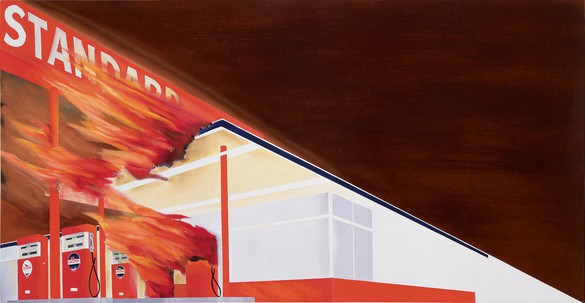Ed Ruscha was born in a flyover state (Nebraska) at a time when cross-country travel was done in automobiles and the Southwest was not yet interconnected by superhighways. When he moved to LA, in 1956, he’d often drive the 1,000 miles between there and Oklahoma City in a 1950 Ford on the old Route 66. Along the way, he was mesmerized by the repetition of Standard Oil filling stations, so much so that they would become his Pop symbol of America, as Coca-Cola bottles did for Warhol. Burning Gas Station (1965–66) is one of my favorites from this series by Ruscha because it glorifies the homecoming of that journey and introduces many of the artist’s hallmarks, like the strong use of perspectival diagonals, expressed in the gas station’s canopy, and the flames that engulf it all. (Another of Ruscha’s iconic works, The Los Angeles County Museum on Fire, was created at the same time.) The definite touch of irony in a gas station in flames in the desert has always reminded me of Warhol’s Disaster paintings from the same period. Ruscha doubles down on calamity: the terror of a raging fire being fueled by a gas station. It’s deadpan humor with a dose of menace.
February 23, 2017
Spotlight
Ed Ruscha
Here is Ed Ruscha’s Burning Gas Station (1965–66). Text by Larry Gagosian.
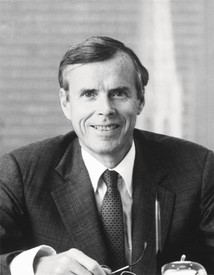
Donald Marron
Jacoba Urist profiles the legendary collector.
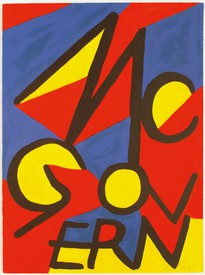
The Art History of Presidential Campaign Posters
Against the backdrop of the 2020 US presidential election, historian Hal Wert takes us through the artistic and political evolution of American campaign posters, from their origin in 1844 to the present. In an interview with Quarterly editor Gillian Jakab, Wert highlights an array of landmark posters and the artists who made them.
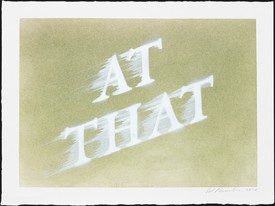
“Things Fall Apart”: Ed Ruscha’s Swiped Words
Lisa Turvey examines the range of effects conveyed by the blurred phrases in recent drawings by the artist, detailing the ways these words in motion evoke the experience of the current moment.

Artists’ Magazines
Gwen Allen recounts her discovery of cutting-edge artists’ magazines from the 1960s and 1970s and explores the roots and implications of these singular publications.
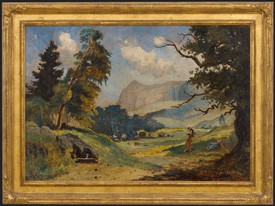
Eilshemius and Me: An Interview with Ed Ruscha
Ed Ruscha tells Viet-Nu Nguyen and Leta Grzan how he first encountered Louis Michel Eilshemius’s paintings, which of the artist’s aesthetic innovations captured his imagination, and how his own work relates to and differs from that of this “Neglected Marvel.”
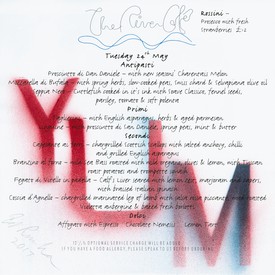
The River Café Cookbook
London’s River Café, a culinary mecca perched on a bend in the River Thames, celebrated its thirtieth anniversary in 2018. To celebrate this milestone and the publication of her cookbook River Café London, cofounder Ruth Rogers sat down with Derek Blasberg to discuss the famed restaurant’s allure.
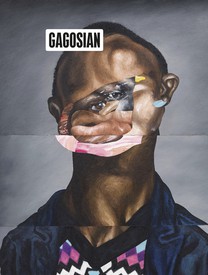
Now available
Gagosian Quarterly Fall 2019
The Fall 2019 issue of Gagosian Quarterly is now available, featuring a detail from Sinking (2019) by Nathaniel Mary Quinn on its cover.
Ed Ruscha: A Long Way from Oklahoma
In conjunction with his exhibition VERY at Louisiana Museum of Modern Art in Humlebæk, Denmark, Ed Ruscha sat down with Kasper Bech Dyg to discuss his work.
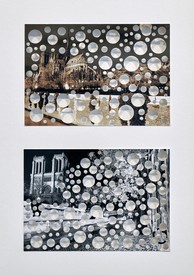
For Notre-Dame
An exhibition at Gagosian, Paris, is raising funds to aid in the reconstruction of the Cathédrale Notre-Dame de Paris following the devastating fire of April 2019. Gagosian directors Serena Cattaneo Adorno and Jean-Olivier Després spoke to Jennifer Knox White about the generous response of artists and others, and what the restoration of this iconic structure means across the world.

Veil and Vault
An exhibition at the Broad in Los Angeles prompts James Lawrence to examine how artists give shape and meaning to the passage of time, and how the passage of time shapes our evolving accounts of art.
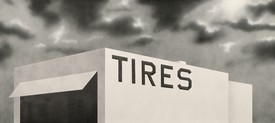
Course of Empire
Ed Ruscha sat down with Tom McCarthy and Elizabeth Kornhauser, curator at the Metropolitan Museum of Art, to discuss the nineteenth-century artist Thomas Cole, whose Course of Empire paintings inspired a series of works by Ruscha more than a century later.
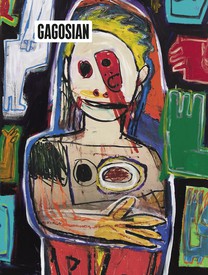
Gagosian Quarterly Winter 2018
The Winter 2018 issue of Gagosian Quarterly is now available. Our cover this issue comes from High Times, a new body of work by Richard Prince.
